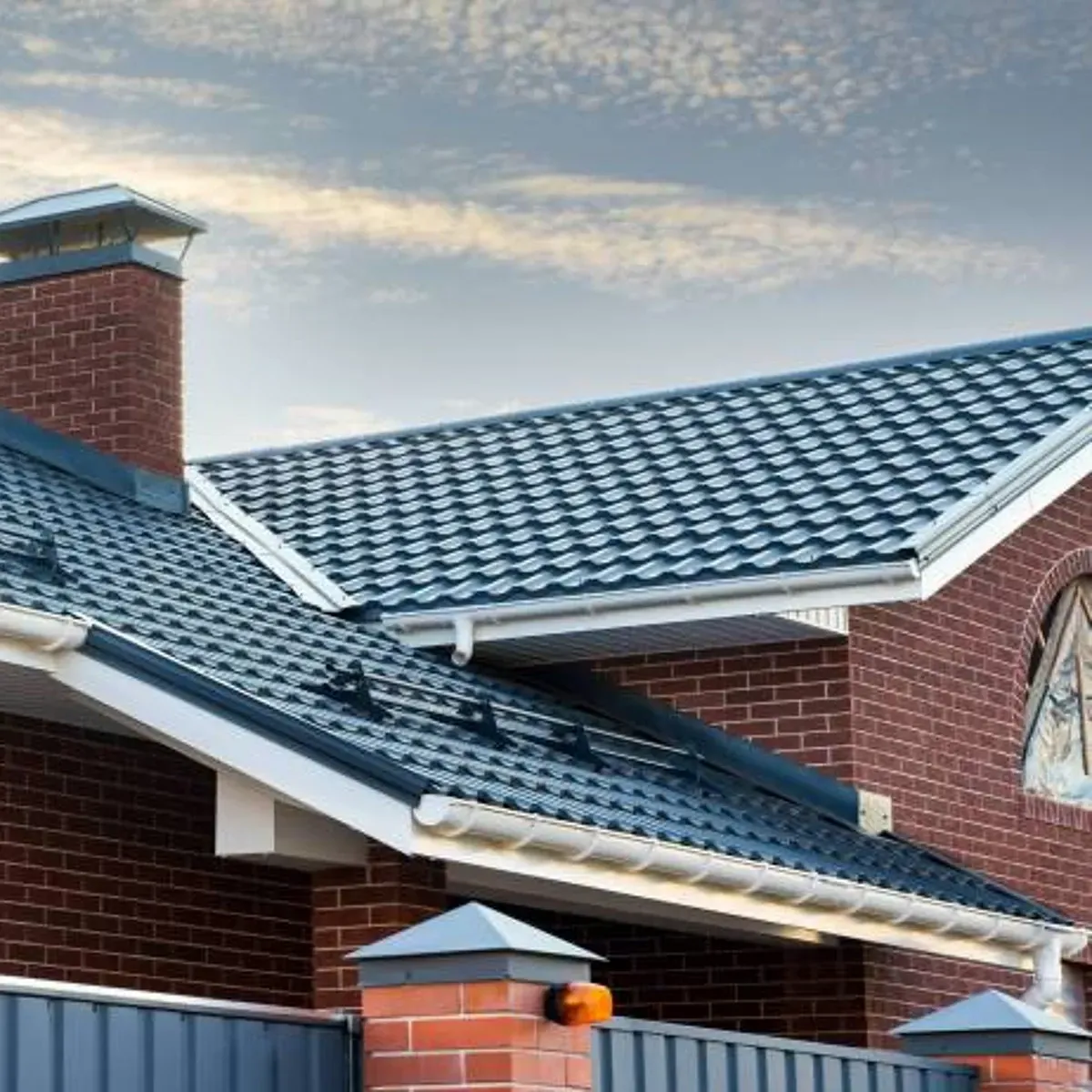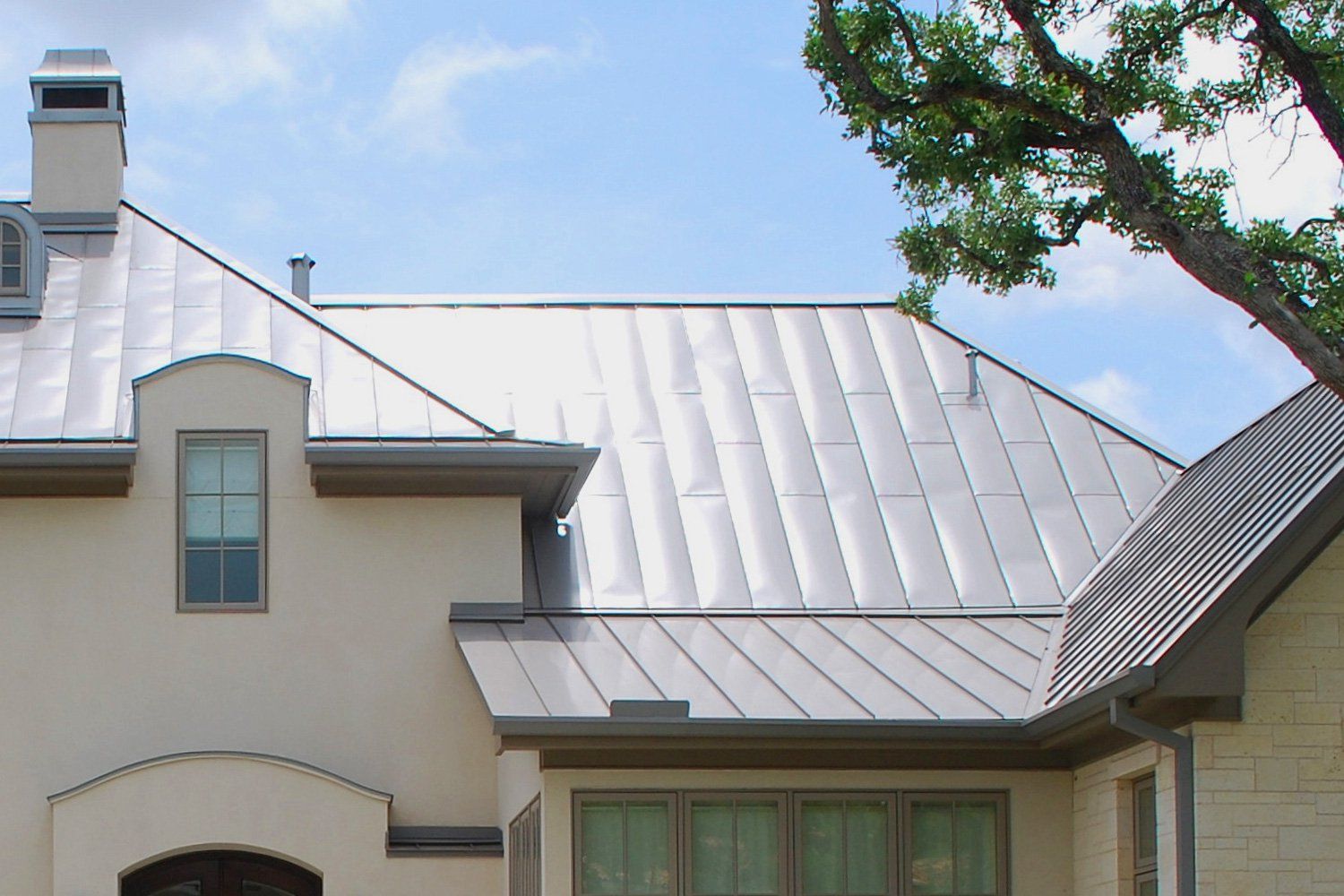Solar panels and roofing make a great team for your home. They work together to save energy and money. You might wonder if they're truly a perfect match.
Solar panels and roofs can be an excellent pair when planned and installed correctly. The right roof type makes solar panel installation easier and more effective. Some roofs, like metal or asphalt shingle, work well with solar panels.
Installing solar panels can be a smart choice when you need a new roof. You can coordinate the two projects to save time and money. This approach helps you create an energy-efficient home that looks good and performs even better.
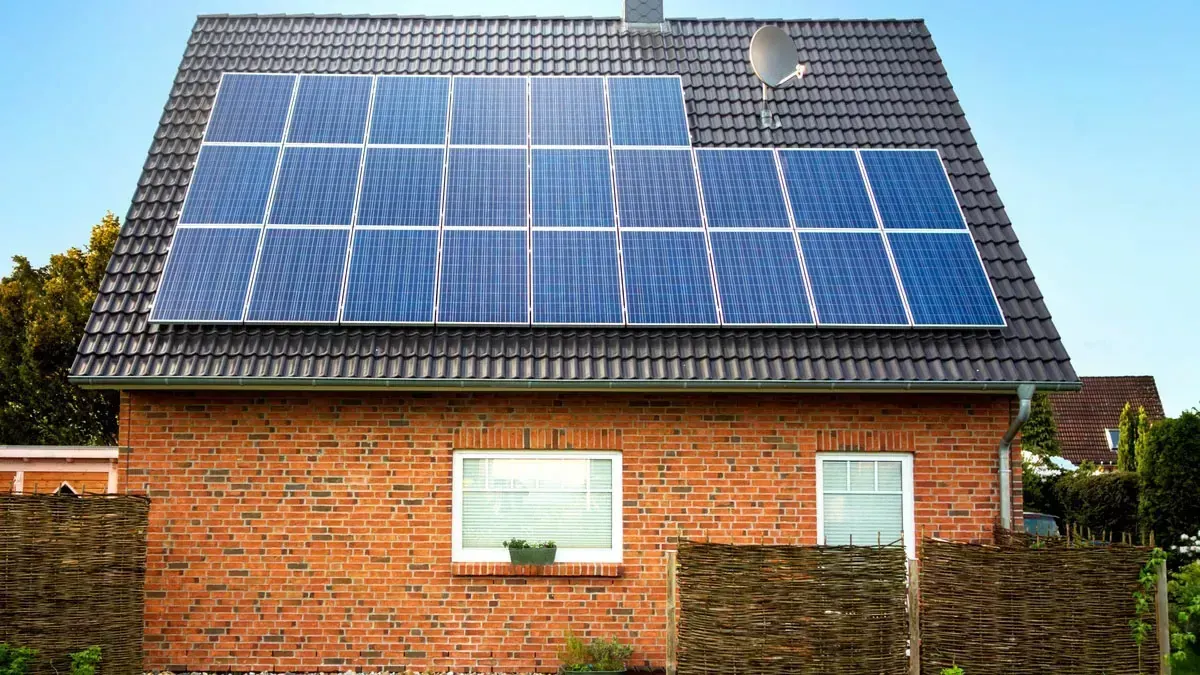
The Fundamentals of Solar Panel Technology
Solar panels use special materials to turn sunlight into electricity. There are different types of panels available, each with their own pros and cons.
How Solar Panels Convert Sunlight Into Electricity
Solar cells are the key parts of solar panels. These cells contain a material called silicon that reacts when sunlight hits it. This reaction causes electrons to move, creating an electric current.
The cells are wired together to form a panel. Multiple panels can be connected to generate more power.
When sunlight hits the panels, they produce direct current (DC) electricity. An device called an inverter then changes this DC power into alternating current (AC) that your home can use.
Types of Solar Panels Available
There are three main types of solar panels you can choose from:
- Monocrystalline: Made from a single crystal structure. They are very efficient but cost more.
- Polycrystalline: Made from multiple crystal fragments. Less efficient than mono, but cheaper.
- Thin-film: Made by spreading silicon on a surface. They are flexible and work well in low light, but take up more space.
Each type has different looks and performance levels. Monocrystalline panels are often black, while polycrystalline ones are blue. Thin-film panels can be made in various colors.
Your choice depends on your roof space, budget, and energy needs. Talk to a solar expert to find the best fit for your home.
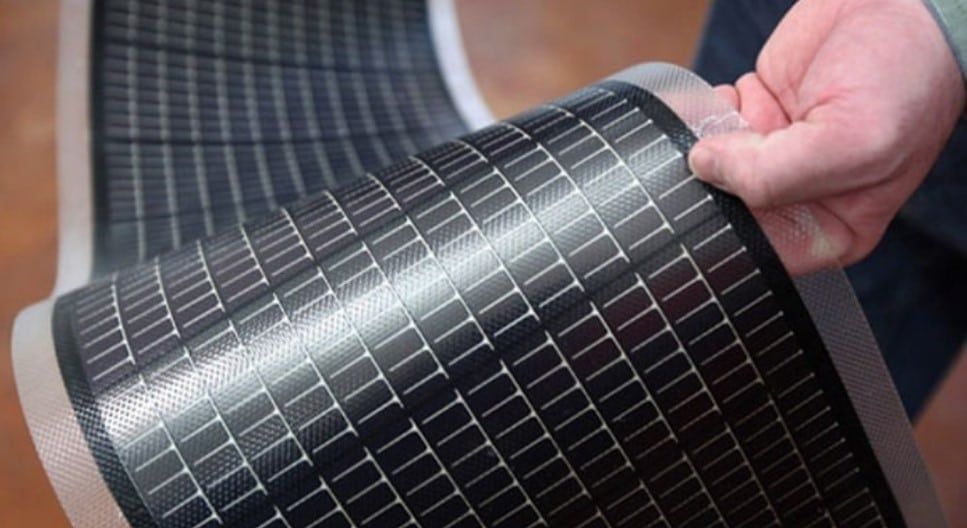
Understanding Roofing Compatibility for Solar Panels
Installing solar panels on your roof requires careful consideration of various factors. The type of roofing material, structural integrity, and orientation all play crucial roles in determining compatibility and efficiency.
Roof Materials and Solar Panel Suitability
Different roofing materials have varying levels of suitability for solar panel installation. Asphalt shingles, the most common residential roofing material, work well with solar panels. They're easy to work with and can support the weight of panels.
Metal roofs are excellent for solar installations. They're durable and often don't require additional mounting hardware. Tiles, both clay and concrete, can support panels but may need special mounting systems.
Flat roofs, common in commercial buildings, offer versatility for panel placement. However, they may need additional waterproofing measures.
Wood shingles and slate are less ideal. They're more fragile and may not withstand the installation process well. If you have these materials, consult a professional to explore your options.
Structural Considerations for Installing Solar Panels
Your roof's structural integrity is crucial when adding solar panels. The roof must be able to support the additional weight without risking damage.
A typical solar panel system adds about 2-4 pounds per square foot to your roof. This might not seem like much, but it adds up quickly. An average residential system can weigh between 500-1000 pounds.
Key factors to consider:
- Age of your roof
- Current structural condition
- Local building codes and regulations
If your roof is over 10 years old or shows signs of wear, consider replacing it before installing solar panels. This can save you money in the long run by avoiding future removal and reinstallation of panels.
Orientation and Tilt: Maximizing Solar Efficiency
The direction your roof faces and its angle greatly affect solar panel efficiency. In the Northern Hemisphere, south-facing roofs receive optimal sunlight.
Ideal roof orientation:
- South-facing: Best option
- East or west-facing: Can work with more panels
- North-facing: Least efficient, may require alternative mounting solutions
The roof's pitch also matters. A tilt between 30-45 degrees is generally ideal for most locations in the United States. Flat roofs may need tilted mounting systems to achieve the best angle.
Remember, even if your roof isn't perfectly oriented, modern solar technology can still provide significant energy savings. A professional assessment can help determine the most efficient setup for your specific situation.
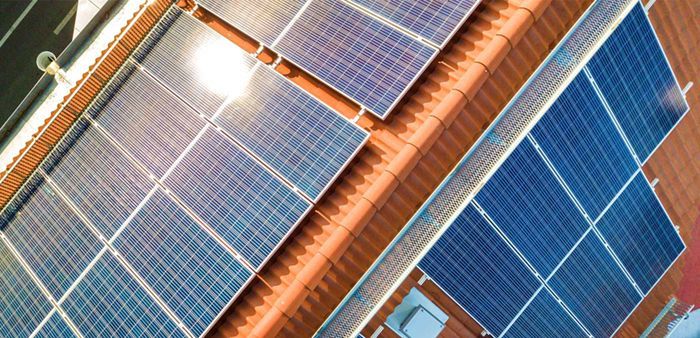
Integration Approaches for Solar Panels and Roofing
Solar panels and roofing can work together in different ways. The method you choose depends on your goals, budget, and home design.
Traditional Mounted Systems
Traditional mounted systems are a common way to add solar panels to your roof. These systems use racks to attach panels on top of your existing roof. You can install them on most roof types, including asphalt shingles, metal, and tile.
The main benefit is that you can add solar without changing your roof. It's often cheaper than other options.
But there are some drawbacks. The panels stick out from your roof, which some people don't like. They can also make it harder to replace your roof later.
When you install these systems, workers drill holes in your roof to attach the racks. Good installers seal these holes well to prevent leaks.
Solar Shingles and Building-Integrated Photovoltaics
Solar shingles and building-integrated photovoltaics (BIPV) offer a sleeker look. These systems blend into your roof, looking more like normal roofing materials.
Solar shingles replace some or all of your regular shingles. They protect your roof while also making power. BIPV can include other parts of your home too, like skylights or siding.
These options often cost more than traditional panels. But they can boost your home's value and look great.
You'll need to replace your whole roof to use these systems. This makes them a good choice if you need a new roof anyway.
They tend to make less power than regular panels. But technology is improving, and newer versions are getting better.
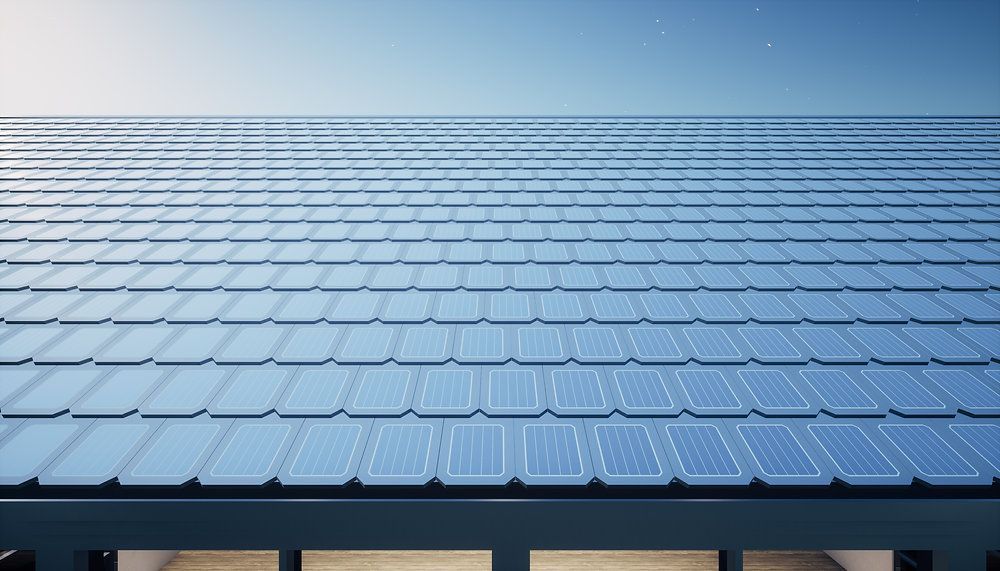
Economic Aspects of Combining Solar Panels with Roofing
Installing solar panels when replacing your roof can lead to significant financial benefits. You'll find potential for long-term savings and may qualify for various incentives.
Cost-Benefit Analysis of Solar Panel Installation
The upfront cost of combining roof replacement with solar panel installation is around $25,000-$30,000. This investment covers both a new roof and a solar power system.
While expensive initially, you'll see benefits over time. Solar panels typically last 25-30 years, matching the lifespan of many roofing materials.
By installing both at once, you avoid future costs of removing and reinstalling panels for roof work. This saves money and hassle down the line.
Your home value may also increase with solar panels. Some buyers are willing to pay more for houses with existing solar systems.
Potential Savings and Incentives
Solar panels can greatly reduce your electricity bills. The exact savings depend on factors like your location, energy use, and system size.
Many areas offer financial incentives for solar installation. These may include:
- Federal tax credits
- State rebates
- Local utility company incentives
Some programs even provide cash rebates for solar installation.
You might also benefit from net metering. This allows you to sell excess energy back to the grid, further lowering your bills.
Over time, these savings and incentives can offset the initial installation costs. Your solar system could pay for itself within several years.
Maintenance and Longevity of Solar Panel Systems
Solar panels can last a long time with proper care. Regular upkeep and checks help keep them working well. Let's look at how to maintain your panels and how long they might last.
Routine Maintenance and Upkeep
Keeping your solar panels clean is key. You should clean them every few months. Use water and a soft brush to remove dirt and leaves. Don't use harsh chemicals.
Check for damage after storms. Look for cracks or loose parts. Fix small issues quickly to avoid bigger problems.
Keep trees trimmed. Shade can lower how much power your panels make. Cut back branches that block the sun.
Have a pro check your system yearly. They can spot problems you might miss. This helps your panels work better for longer.
Durability and Life Expectancy
Solar panels are tough. They can handle rain, snow, and sun for many years. Most panels last 25 to 30 years.
Newer panels work better than old ones. They break down less often. A study found panels made after 2000 last longer than those from the 1980s and 1990s.
Your roof might even last longer with solar panels. The panels can protect your roof from sun and rain damage.
The weather where you live affects how long panels last. Very hot or cold places might wear panels out faster. But good care can help them last longer anywhere.
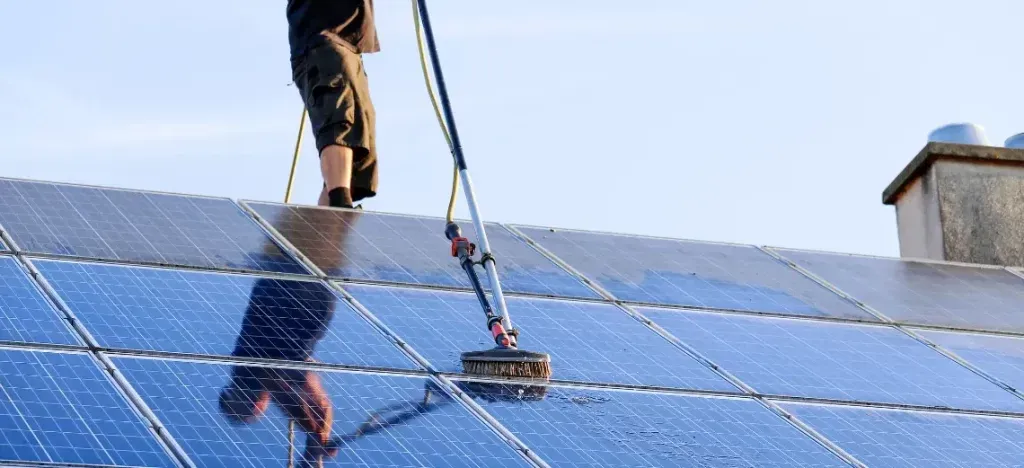
Conclusion
Solar panels and roofing work great together. They can make your home more energy-efficient and eco-friendly.
When you add solar panels, you might save money on power bills. Your home's value could also go up.
Putting solar panels on your roof uses space wisely. The roof gives panels a good spot to catch sunlight.
Before installing solar, make sure your roof is in good shape. A sturdy roof helps the panels work better for longer.
For homeowners in Providence, RI, Providence Roofing Company can help. We offer expert roofing services to prepare your home for solar panels.
Providence Roofing Company knows how to make roofs and solar panels work as a team. Our skilled staff can check if your roof is ready for panels.
You can trust Providence Roofing Company to do the job right. We use quality materials and follow best practices.
By choosing a pro like Providence Roofing Company, you set yourself up for success. Your new roof and solar system can work together smoothly for years.

